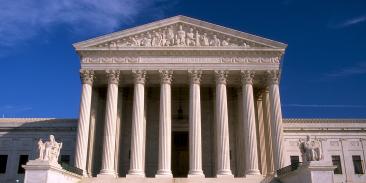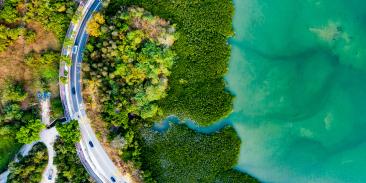Landmark Agreement to Save Endangered Species in Hawaii Could Serve as National Model
FOR IMMEDIATE RELEASE
Contact:
Sean Crowley, (202)572-3331, scrowley@environmentaldefense.org
Meg Little, (202)572-3387, mlittle@environmentaldefense.org
(Lana’i City, HI - December 5, 2006) Hearings begin today on a landmark agreement to save five endangered birds in Hawaii that could serve as a national model for helping private farmers and ranchers recover endangered wildlife in any state where private lands provide vitally important wildlife habitat. The Hawaii agreement marks the first time that the U.S. Department of Agriculture (USDA) and local Resource Conservation District staff are taking a leadership role in helping private landowners restore endangered species throughout a state.
Under the Safe Harbor agreement, private landowners who are working with the USDA to restore wetland and other habitats will receive assurances that future land use requirements will not be imposed because of conservation efforts carried out under Farm Bill conservation programs statewide. To be eligible, landowners must be enrolled in a USDA Farm Bill Conservation Program and making improvements to wetlands or habitat benefiting any of five endangered birds: Hawaiian Goose (Nene), Hawaiian Duck, Hawaiian Moorhen, Hawaiian Coot, and Hawaiian Stilt. For more details, see http://www.state.hi.us/dlnr/dofaw/pubs/index.html.
“Hawaii has a long history of using Safe Harbor agreements, but this one is really innovative and should be repeated everywhere across the country where private farms and ranches can provide habitat for endangered species with USDA’s help,” said Michael Bean, a leading authority on the Endangered Species Act and chair of the Wildlife program at Environmental Defense, a leading national nonprofit group that worked with the U.S. Fish and Wildlife Service and other partners to create the first Safe Harbor agreement more than a decade ago.
The agreement will take effect after a public comment period and approval by the State of Hawaii and the U.S. Fish and Wildlife Service. USDA staff will deliver the Farm Bill portion of the agreement, and Hawaii’s Resource Conservation Districts will administer individual landowner agreements and conduct outreach. State and federal wildlife agencies will provide expertise on endangered species.
“The USDA spends $4 billion a year on conservation. Finding ways to direct USDA dollars toward endangered species recovery is incredibly important and that’s exactly what agencies in Hawaii have figured out,” said Timothy Male, PhD., senior ecologist at Environmental Defense.
Nationally, Safe Harbor agreements have already been struck with several hundred landowners on approximately four million acres of land nationwide. Safe Harbor agreements were responsible for the reintroduction of the Hawaiian goose (the state’s official bird) to the island of Molokai, after an absence of more than two centuries, and the return of the northern aplomado falcon, North America’s rarest falcon, as a breeding bird in Texas after an absence of several decades.
With more than 3 million members, Environmental Defense Fund creates transformational solutions to the most serious environmental problems. To do so, EDF links science, economics, law, and innovative private-sector partnerships to turn solutions into action. edf.org
Latest press releases
-
Bill Would Explore Responsible Growth of Domestic Seafood
August 4, 2025 -
Legislation Introduced to Reverse Tax Hikes on Clean Energy
August 2, 2025 -
Groups File Lawsuit Challenging Trump EPA’s Delay of Protections Against Oil and Gas Methane Pollution
July 31, 2025 -
New study shows how sectoral emissions shape today’s warming and tomorrow’s risks
July 30, 2025 -
EPA Administrator Zeldin Delays Commonsense Methane Pollution Protections
July 29, 2025 -
NEW: U.S. Government’s Own Analysis Shows Repealing Tailpipe Pollution Standards Will Sharply Increase Gasoline Prices
July 29, 2025










